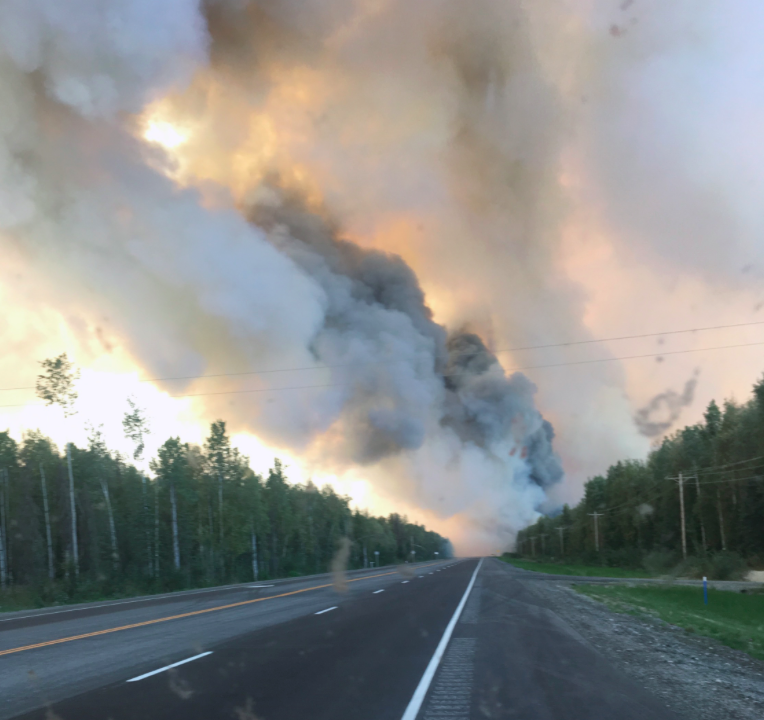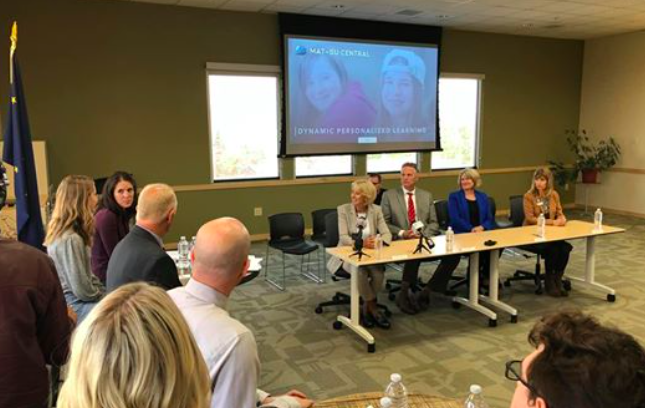Here is the BP Press Release in its entirety:
BP today announced that it has agreed to sell its entire business in Alaska to Hilcorp Alaska, based in Anchorage, Alaska. Under the terms of the agreement, Hilcorp will purchase all of BP’s interests in the state for a total consideration of $5.6 billion.
The sale will include BP’s entire upstream and midstream business in the state, including BP Exploration (Alaska) Inc., that owns all of BP’s upstream oil and gas interests in Alaska, and BP Pipelines (Alaska) Inc.’s interest in the Trans Alaska Pipeline System (TAPS).
[Read: BP sale rumor surfaces again, with credibility]
Bob Dudley, BP group chief executive, said: “Alaska has been instrumental in BP’s growth and success for well over half a century and our work there has helped shape the careers of many throughout the company. We are extraordinarily proud of the world-class business we have built, working alongside our partners and the State of Alaska, and the significant contributions it has made to Alaska’s economy and America’s energy security.
“However, we are steadily reshaping BP and today we have other opportunities, both in the U.S. and around the world, that are more closely aligned with our long-term strategy and more competitive for our investment. This transaction also underpins our two-year $10 billion divestment program, further strengthening our balance sheet and enabling us to pursue new advantaged opportunities for BP’s portfolio within our disciplined financial framework.
“As a highly-capable operator with extensive Alaskan experience, Hilcorp is ideally-placed to take this important business on into the future, continuing to optimize its performance and maximize its value for the State of Alaska. We are committed to a safe and smooth transition of operations so that our employees, partners and local, state and federal government officials all feel that we have handed over these important assets in the right way.”
Under the terms of the agreement, Hilcorp will pay BP a total consideration of $5.6 billion, comprising $4.0 billion payable near-term and $1.6 billion through an earnout thereafter. Subject to state and federal regulatory approval, the transaction is expected to be completed in 2020. The deal forms a significant part of BP’s plan to divest $10 billion of assets over 2019 and 2020.
Janet Weiss, regional president, BP Alaska, added: “Today’s announcement marks the start of an exciting new chapter for Prudhoe Bay. Alaska has been a core part of BP for 60 years and saying goodbye will not be easy. Our people have achieved incredible success over the decades developing and maintaining these hugely important assets, but we are confident this sale is in BP’s and the state’s best interests and the business will be best positioned for the future with Hilcorp. We will do all we can to ensure they are able to quickly build on the strong foundation that we and others have built here.”
BP began working in Alaska in 1959, drilling the confirmation well for the Prudhoe Bay oilfield in 1968 and in the mid-1970s helped build the 800-mile Trans Alaska Pipeline. BP began producing oil from Prudhoe Bay in 1977. The giant oilfield – the most prolific in U.S. history – has to date produced over 13 billion barrels of oil and is estimated to have the potential to produce more than one billion further barrels.
BP’s net oil production from Alaska in 2019 is expected to average almost 74,000 barrels a day. BP operates Prudhoe Bay, with a working interest of 26%, and holds non-operating interests in the producing Milne Point and Point Thomson fields. It also holds non-operating interests in the Liberty project and exploration lease interests in the Arctic National Wildlife Refuge (ANWR). In addition to shares in TAPS and its operator the Alyeska Pipeline Service Company, BP is divesting its midstream interests in the Milne Point Pipeline and the Point Thomson Pipeline.
Approximately 1,600 employees are currently associated with BP’s Alaska business and BP is committed to providing clarity about their future as soon as possible as part of the transition process with Hilcorp.
Hilcorp has been operating in Alaska since 2012 and is today the largest private oil and gas operator in the state, currently operating more than 75,000 barrels of oil equivalent a day (boe/d) gross production. In 2014 Hilcorp purchased interests from BP in four operated Alaska North Slope oilfields.
BP continues to develop its business in the U.S., where between 2005 and 2018 it invested over $115 billion, more than any other energy investor. In the second quarter of 2019, BP’s net oil and gas production from the U.S. averaged over 921,000 boe/d, from major interests in Alaska, onshore Lower 48 and deepwater Gulf of Mexico.
In late 2018, BP acquired a portfolio of high-quality onshore US oil and gas interests from BHP for $10.5 billion, adding 190,000 boe/d net production. BP also continues to develop its business in the deepwater Gulf of Mexico, bringing on a series of new projects on its major producing assets. The new $9 billion Argos platform on the Mad Dog field is expected on stream in 2021.
Bob Dudley added: “Our exit from Alaska does not in any way diminish BP’s commitment to America. We remain very bullish on the U.S. energy sector. In just the last three years we have invested more than $20 billion in the U.S. and we will continue to look at further investment opportunities here.”
Note to Editors:
Interests included in the transaction:
Upstream oil and gas interests:
- Prudhoe Bay, 26% (operator BP);
- Milne Point, 50% (operator Hilcorp);
- Point Thomson, 32% (operator ExxonMobil);
- Liberty project, 50% (operator Hilcorp);
- Non-operating interests in exploration leases in ANWR.
Midstream pipeline interests:
- Trans Alaska Pipeline System, 49%;
- Alyeska Pipeline Service Company, 49%;
- Point Thomson Export Pipeline, 32%;
- Milne Point Pipeline, 50%.
Other:
- Prince William Sound Oil Spill Response Corporation, 25%
|
 |
BP in Alaska:
- BP is the operator and 26% owner in the Prudhoe Bay oilfield.
- Prudhoe Bay is located on the coast of the Arctic Ocean in northern Alaska, 650 miles north of Anchorage. It is the third largest oilfield in North America by proved reserves.
- To date, Prudhoe Bay has produced more than 13 billion barrels of oil, far exceeding initial projections of 9.6 billion barrels. In 2018, Prudhoe Bay produced about 270,000 barrels of oil a day, accounting for more than half of the State of Alaska’s total oil production.
- In 2014, BP divested its interests in the Endicott and North Star fields and half its interests in the Milne Point and Liberty fields to Hilcorp.
- In 2018, BP sold its interest in the Kuparuk field to ConocoPhillips.
- BP Alaska currently employs some 1,600 staff, supports around 8,000 jobs in Alaska and in 2018 spent $700 million with 280 Alaska vendors.
- In 2018, BP donated more than $4 million to education and community organizations across Alaska.
|
 |
BP in the U.S.:
- BP is a global producer of oil and gas with operations in nearly 80 countries. BP has a larger economic footprint in the U.S. than in any other nation, investing more than $115 billion since 2005.
- BP employs about 14,000 people across the U.S. and supports more than 125,000 additional jobs through all its business activities.
- In the U.S., in addition to Alaska BP has oil and gas producing interests in the deepwater Gulf of Mexico, and onshore in the Lower 48. It operates three refineries, two petrochemical manufacturing sites and has over 7,000 fuel retail sites. BP also has a wind power business in the U.S., operating 10 sites in seven states.
- For more information on BP in America, visit www.bp.com/us.
|
 |
Hilcorp Alaska:
- Hilcorp Alaska, an affiliate Hilcorp Energy Company, is a privately held oil and natural gas exploration and production company. Headquartered in Anchorage, Hilcorp Alaska employs more than 500 full-time employees throughout the state. Hilcorp Energy Company is headquartered in Houston, Texas, and has more than 2,300 full-time employees. Hilcorp continues to grow by actively acquiring and developing conventional assets while expanding its footprint into a number of new resource plays.
- Harvest Alaska, an affiliate of Harvest Midstream Company, is a privately held midstream services provider based in Anchorage, Alaska. Harvest Alaska currently operates pipeline systems in Alaska’s Cook Inlet and on the North Slope. Harvest Midstream operates crude oil and natural gas gathering, storage, transportation, treatment and terminalling assets across the Lower 48 and Alaska. To learn more visit www.harvestmidstream.com.
|









